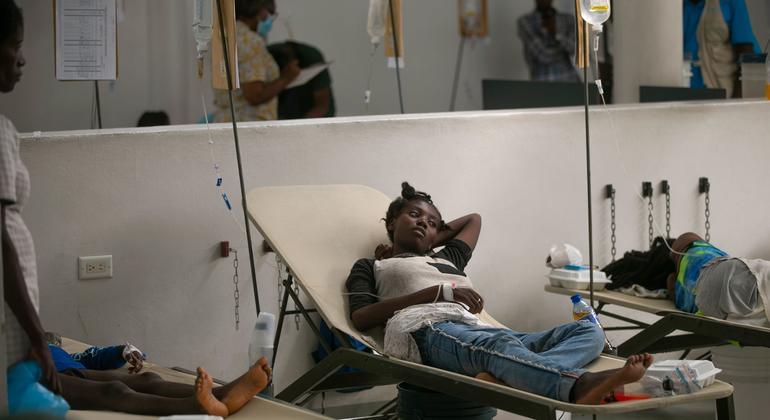March 24 marked the publication of the final bulletin of the Office for National Statistics’ (ONS) Coronavirus Infection Survey after nearly three years of tracking COVID infections in the UK. The first bulletin was published on May 14 2020 and we’ve seen new releases almost every week since.
The survey was based primarily on data from many thousands of people in randomly selected households across the UK who agreed to take regular COVID tests. The ONS used the results to estimate how many people were infected with the virus in any given week.
In the survey’s first six months, we had results from 1.2 million samples taken from 280,000 people. Although the number of people participating each month declined over time, the survey has continued to be a highly valuable tool as we navigate the pandemic.
In particular, because the ONS bulletins were based on surveying a large, random sample of all UK residents, it offered the least biased surveillance system of COVID infections in the UK. We are not aware of any similar study anywhere else in the world. And, while estimating the prevalence of infections was the survey’s main output, it gave us a lot of other useful information about the virus too.
Unbiased surveillance
An important advantage of the ONS survey was its ability to detect COVID infections among many people who had no symptoms, or were not yet displaying symptoms.
Certainly other data sets existed (and some continue to exist) to give a sense of how many people were testing positive. For example, earlier in the pandemic, case numbers were reported at daily national press conferences. Figures continue to be published on the Department of Health and Social Care website.
But these totals have usually only encompassed people who tested because they had reason to suspect they may have been infected (for example because of symptoms or their work). We know many people had such minor symptoms that they had no reason to suspect they had COVID. Further, people who took a home test may or may not have reported the result.
Similarly, case counts from hospital admissions or emergency room attendances only captured a very small percentage of positive cases, even if many of these same people had severe healthcare needs.
Symptom-tracking applications such as the ZOE app or online surveys have been useful but tend to over-represent people who are most technologically competent, engaged and symptom-aware.
Testing wastewater samples to track COVID spread in a community has proved difficult to reliably link to infection numbers.
Read more:
The tide of the COVID pandemic is going out – but that doesn’t mean big waves still can’t catch us
What else the survey told us
Aside from swab samples to test for COVID infections, the ONS survey collected blood samples from some participants to measure antibodies. This was a very useful aspect of the infection survey, providing insights into immunity against the virus in the population and individuals.
Beginning in June 2021, the ONS survey also published reports on the “characteristics of people testing positive”. Arguably these analyses were even more valuable than the simple infection rate estimates.
For example, the ONS data gave practical insights into changing risk factors from November 21 2021 to May 7 2022. In November 2021, living in a house with someone under 16 was a risk factor for testing positive but by the end of that period it seemed to be protective. Travel abroad was not an important risk factor in December 2021 but by April 2022 it was a major risk. Wearing a mask in December 2021 was protective against testing positive but by April 2022 there was no significant association.
We shouldn’t find this changing picture of risk factors particularly surprising when concurrently we had different variants emerging (during that period most notably omicron) and evolving population resistance that came with vaccination programmes and waves of natural infection.
Also, in any pandemic the value of non-pharmaceutical interventions such wearing masks and social distancing declines as the infection becomes endemic. At that point the infection rate is driven more by the rate at which immunity is lost.
Paul Maguire/Shutterstock
The ONS characteristics analyses also offered evidence about the protective effects of vaccination and prior infection. The bulletin from May 25 2022 showed that vaccination provided protection against infection but probably for not much more than 90 days, whereas a prior infection generally conferred protection for longer.
After May 2022, the focused shifted to reinfections. The analyses confirmed that even in people who had already been infected, vaccination protects against reinfection, but again probably only for about 90 days.
It’s important to note the ONS survey only measured infections and not severe disease. We know from other work that vaccination is much better at protecting against severe disease and death than against infection.
Read more:
How will the COVID pandemic end?
A hugely valuable resource
The main shortcoming of the ONS survey was that its reports were always published one to three weeks later than other data sets due to the time needed to collect and test the samples and then model the results.
That said, the value of this infection survey has been enormous. The ONS survey improved understanding and management of the epidemic in the UK on multiple levels. But it’s probably appropriate now to bring it to an end in the fourth year of the pandemic, especially as participation rates have been falling over the past year.
Our one disappointment is that so few of the important findings from the ONS survey have been published in peer-reviewed literature, and so the survey has had less of an impact internationally than it deserves.




